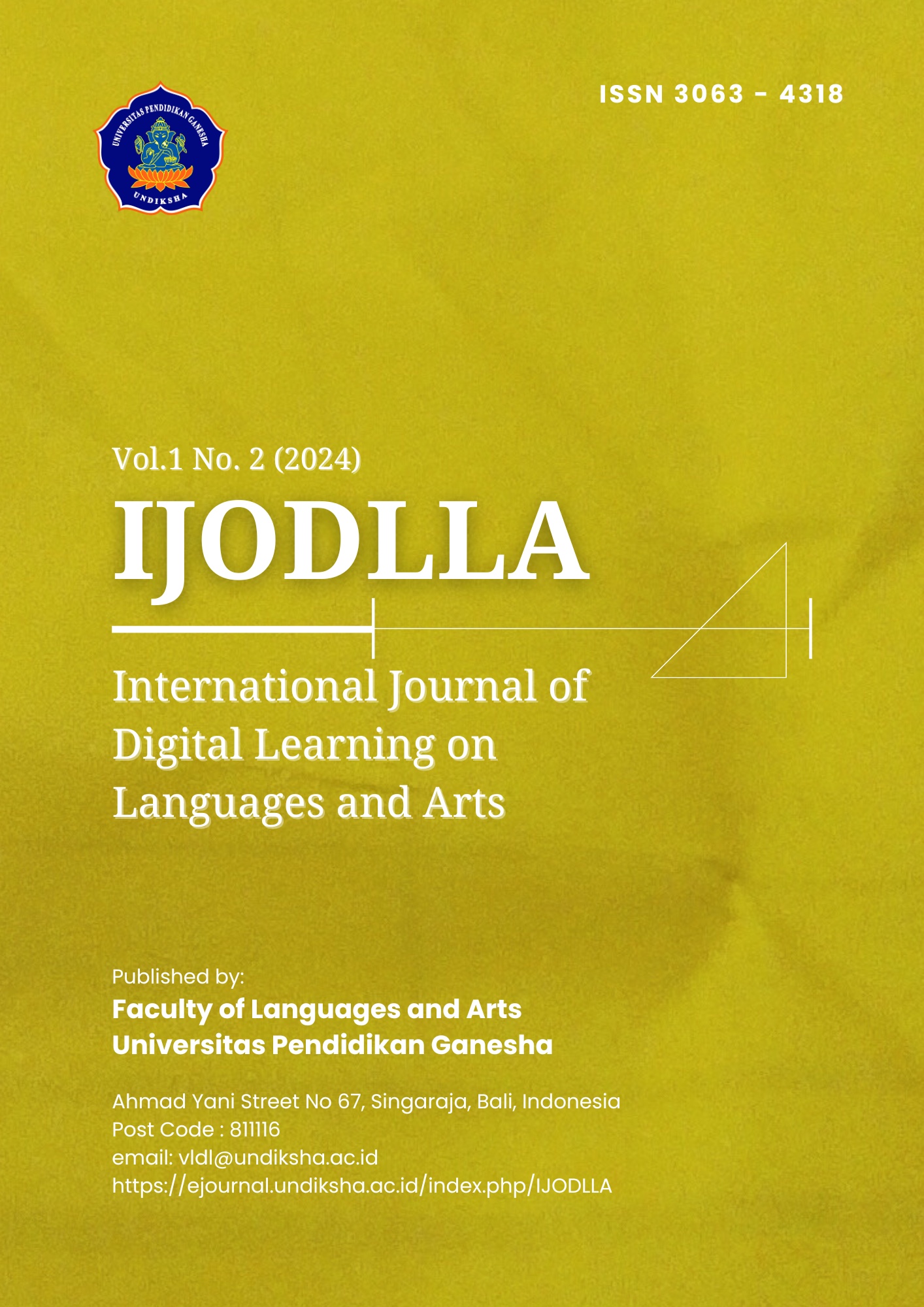Analysis of Fundamental Aspects in Game Character Design
DOI:
https://doi.org/10.23887/ijodlla.v1i2.89349Keywords:
Illustration, Character Design, Game, Concept ArtAbstract
The creation of a commercially successful game comes with many different considerations, such as its variety of content, overall cohesion, capacity of social interactions to name a few of the most important features. They are also well-packaged in a visual format, character designs being the highlight. The researchers have proposed to further understand the strategies employed by commercially successful games on the creative process of character design. Using a discussion-based-qualitative approach, the research will be composed of interviews with experienced concept artists from different sociocultural backgrounds, as well as literary sources to be complementary materials. This research will focus on the comparison between the general thought process and workflow that different concept artists have in creating a compelling character design to try to generate a general foundation for up and coming game concept artists. Further studies can be done to explore more perspectives on the topic to create a more compelling guideline overall.
References
Andelina, I. R. (2020). Kajian desain karakter persona 4 berdasarkan pendekatan archetype dan manga matrix. Narada, 7(1), 61. https://doi.org/10.22441/narada.2020.v7.i1.005
Bond, M., & Beale, R. (2009). What makes a good game? Using reviews to inform design. Electronic Workshops in Computing. https://doi.org/10.14236/ewic/hci2009.52
Bugarski Ignjatović, Vojislava. (2010). Personality traits and colour preferences. https://www.researchgate.net/publication/49595886_Personality_Traits_and_Colour_Preferences
Gray, K. L. (2020). Intersectional tech: Black users in digital gaming. Louisiana State University Press.
Greenberg, B. S., Sherry, J., Lachlan, K., Lucas, K., & Holmstrom, A. (2008, July 25). Orientations to video games among gender and age groups. Simulation & Gaming. https://doi.org/10.1177/1046878108319930
Holbert, R. L., Hill, M. R., & Lee, J. (2014). 22. The political relevance of entertainment media. In De Gruyter eBooks (pp. 427–446). https://doi.org/10.1515/9783110238174.427
Isbister, K. (2006). Better game characters by design: A psychological approach. Morgan Kaufmann.
Jørgensen, K., Nørgård, R. T., & Vedel, J. (2022). “AI and game character design: Opportunities and ethical considerations.” Digital Creativity, 33(1), 24-40.
League of Legends. (2022, August 11). Arcane: Bridging the rift | Part 2 - Persistence (Or when your best still sucks) [Video]. YouTube. https://www.youtube.com/watch?v=xpPyPguzafU
Mendes, L. O., Cunha, L. R., & Mendes, R. S. (2022). Popularity of video games and collective memory. Entropy, 24(7), 860. https://doi.org/10.3390/e24070860
Nicolas Paul. (2021). Video games and their potential effect on tourism. Breda University of Applied Sciences. http://dx.doi.org/10.13140/RG.2.2.22805.45280/1
Taylor, L. N. (2018). Character-driven narrative design in video games. Journal of Game Studies, 13(2), 85-99.
Tian, S., & Woo, T. (2019). Study on the influence of game character design on users’ continuous immersion. Diji’teol Keontencheu Haghoe Nonmunji/Dijiteol Kontencheu Hakoe Nonmunji, 20(6), 1097–1104. https://doi.org/10.9728/dcs.2019.20.6.1097
Downloads
Published
How to Cite
Issue
Section
License
Copyright (c) 2024 Clive Anderson

This work is licensed under a Creative Commons Attribution-ShareAlike 4.0 International License.









